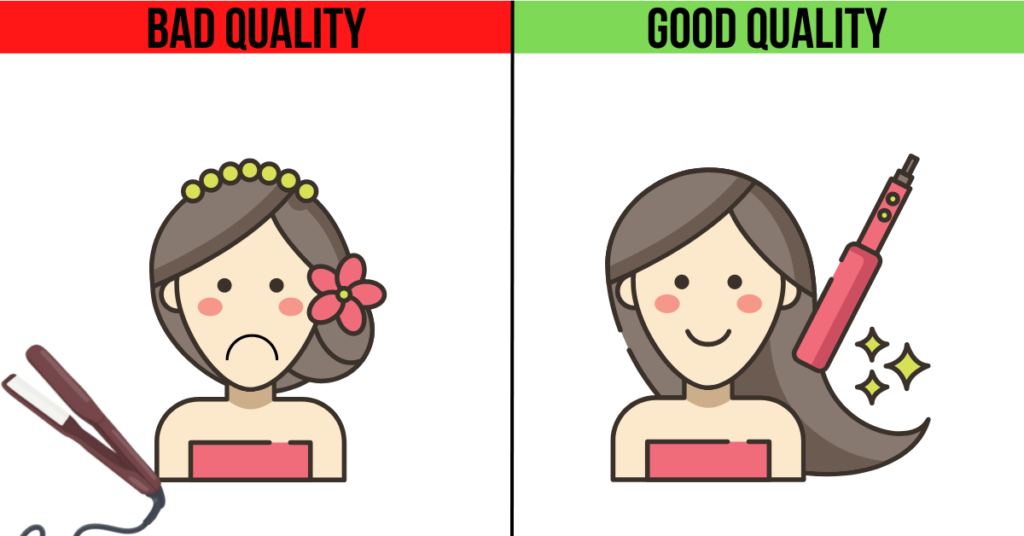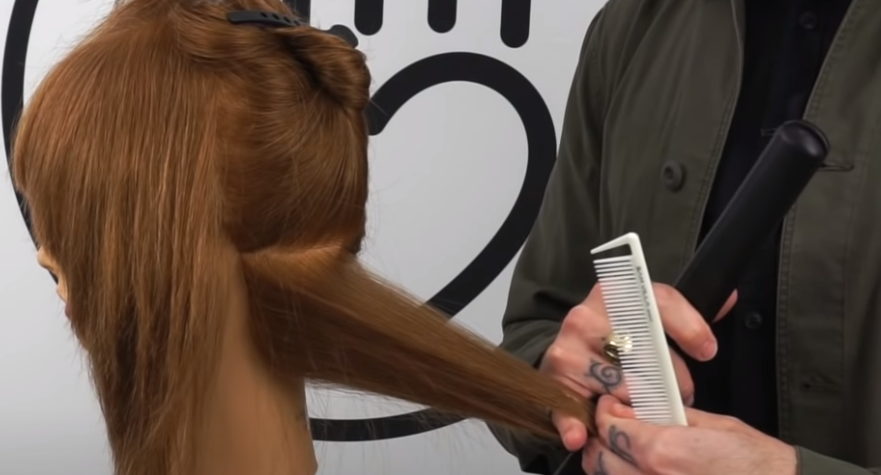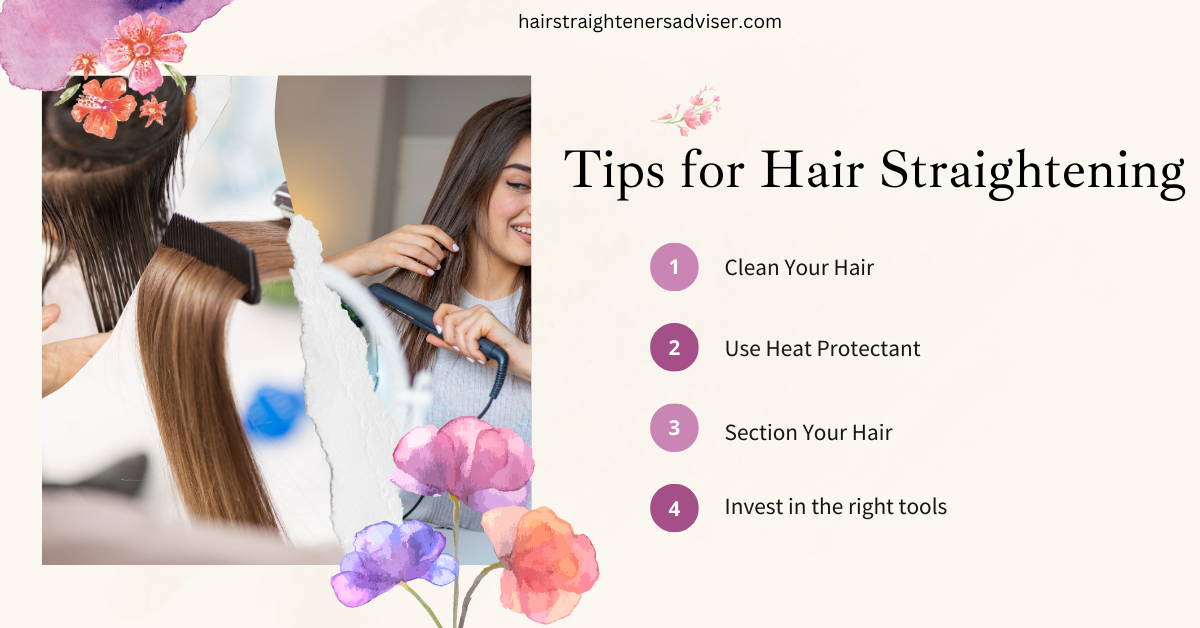Hair straightening is a popular style that can help you look your best and make your hair easier to manage. However, straightening your hair can be a tricky process, and it’s essential to take the necessary steps to ensure that you get the best results and minimize any damage to your hair.
Here are seven tips for successful hair straightening.
1. Start with Clean Hair:
Before you start straightening your hair, make sure it is thoroughly washed and conditioned. This will help you achieve a smoother, more even straightening result.
After washing and conditioning your hair, use a wide-tooth comb to detangle and remove any knots or tangles. This will ensure that the hair is properly prepared for straightening.
Keep in mind you should never under any circumstances be straightening with wet or damp hair. Why? Because if your hair is wet when you start straightening using a heat-based styling tool, you are essentially boiling your hair. This will lead to breakage and other nasty stuff for your hair.
Keep your hair clean and comb through it, but do not straighten it until it is dry!
2. Use a Heat Protectant:

Before you begin straightening your hair, make sure to use a heat protectant to help minimize damage from the heat styling tools.
Hair straighteners apply an unnatural level of heat to your hair, something that causes damage in the long run. Although, this can apply to hair dryers as well. To prevent your tool from harming you, you can simply use a heat protectant.
You can learn more about heat protectants here, but the general idea behind them is that you can prevent about 10-20% of damage to your hair using heat protectants. It might not sound like much at first; however, over the course of the year, it adds up tremendously.
Always use heat protectants!
3. Use the Right Tools:

Invest in a high-quality flat iron or other heat styling tool to ensure the best results and minimize damage to your hair.
Cheaper tools might break or have manufacturing defects. Problems like these can lead to snagging when you are straightening or, even worse, potential harm to your hair.
We always recommend investing in a straightener that will last for years (2-3). Doing so will not only save you money but also lots of grief.
There are a few trusted brands we recommend due to their dedication to quality and customer satisfaction. FHI and GHD are some of our favorites.
4. Section Your Hair:
Before you start straightening your hair, divide it into several sections so that you can work on each section separately and avoid tangles. Some people make the mistake of going over too large of sections, which can cause you to tug on your hair accidentally.
Quite painful, trust me.
This video will show you how to section your hair in just a few easy steps. It is only about two minutes long, so I recommend you watch it!
5. Start at the Roots:
When straightening your hair, start at the roots and work your way down, as this will help ensure an even result.
The ends of your hair are oftentimes the thinnest and most sensitive to heat and therefore need less of it to become straightened. Avoid lingering on them for too long.
A tip from some professionals: only go about halfway down your hair when doing it in sections, and after every section is complete, gather all your hair up and do the ends at the same time.
6. Work in Small Sections:

We already talked about sectioning your hair, so now let’s talk about how to work these smaller sections. When straightening each section of your hair, take small strands and make sure to move quickly in order to avoid heat damage.
Larger sections can cause you to linger for too long in an effort to get it all straightened properly. With smaller sections, you will want to be quicker to avoid overwhelming your hair with the heat from the straightener.
You’ll not only have a more even look to your hair when doing it this way, but your hair will also be much healthier!
7. Don’t Overdo It:
Once you have achieved the desired level of straightness, stop styling and don’t overdo it, as this can cause heat damage.
If you already have damaged hair for one reason or another, stop straightening your hair! At least temporarily. Hair damage is a serious problem in an era where we have so many different tools and products to use on our hair. Sometimes your hair needs a break.
What are the consequences of continuing to damage your hair? Ugly-looking frizzy hair with frequent breakages and a brittle feeling to it. Worst-case scenarios can cause thinning hair and bald spots down the line.
In other words, DON’T OVERDO IT!
Following these seven tips will help you achieve the best results when straightening your hair and minimize any potential damage.
